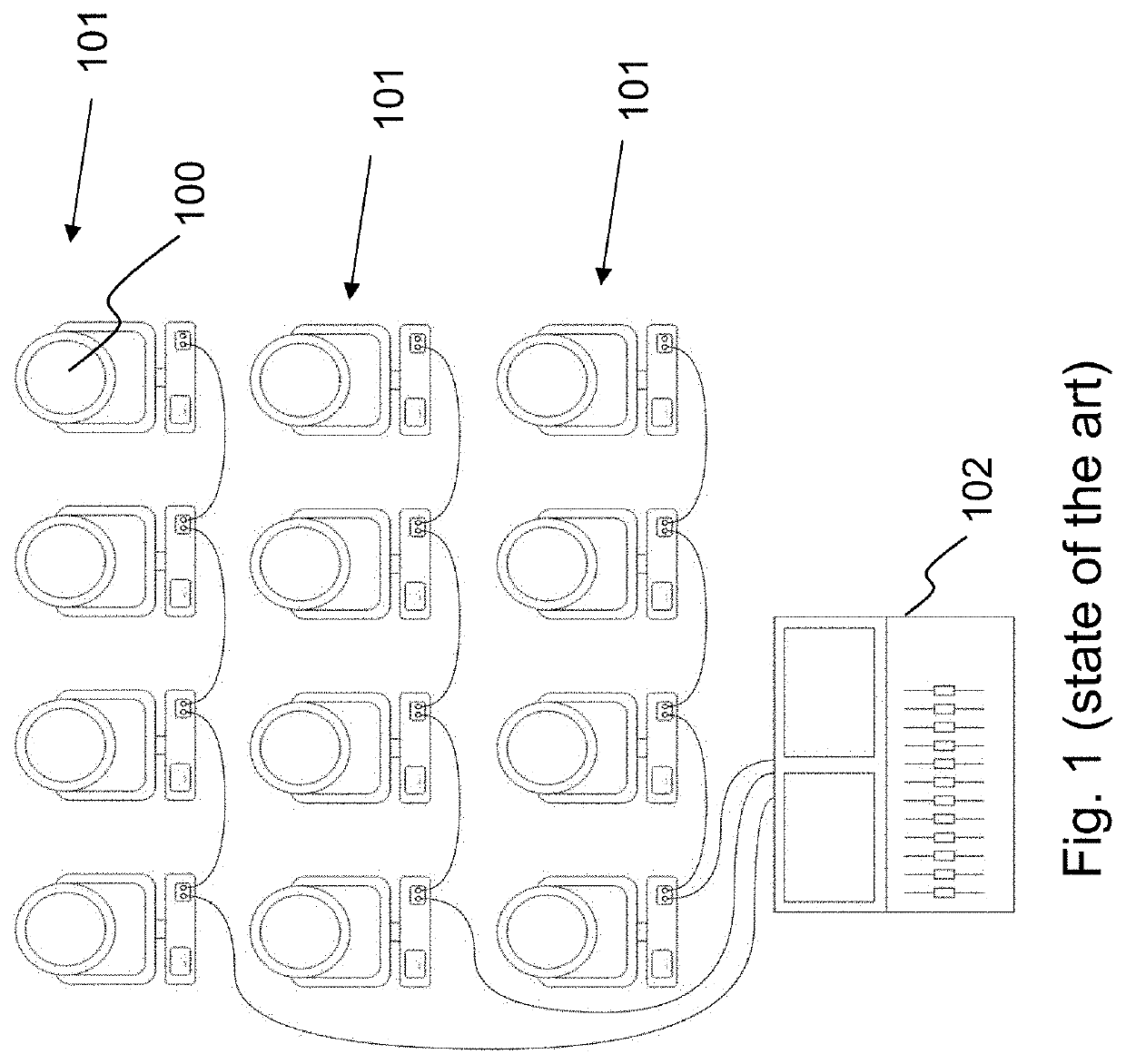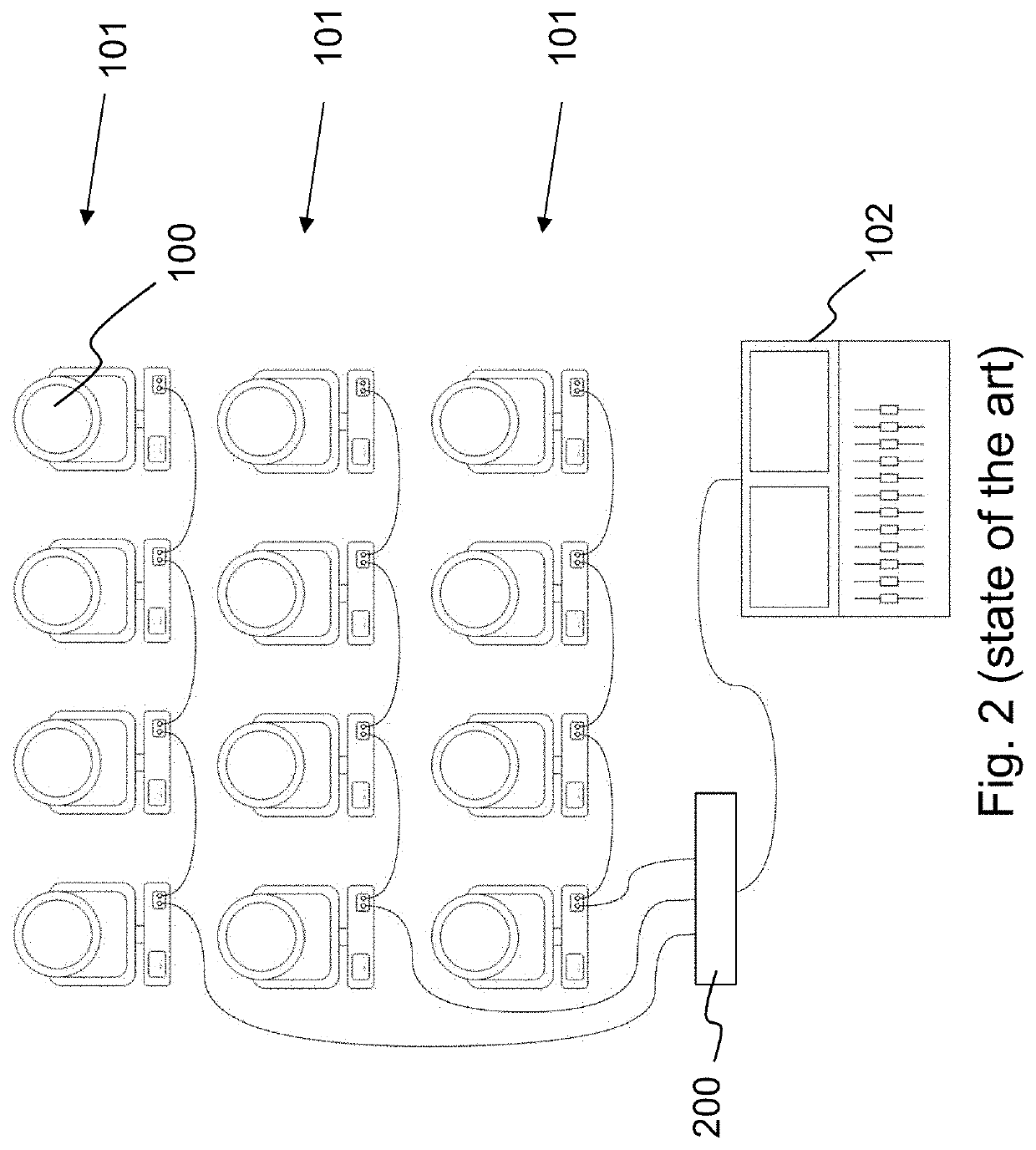Unit for controlling data communication
a technology for controlling devices and data communication, applied in the field of data communication control, can solve problems such as difficult to detect whether and where faults have occurred, large installation space, and disruption of control of devices, and achieve the effect of simplifying the setup of installation
- Summary
- Abstract
- Description
- Claims
- Application Information
AI Technical Summary
Benefits of technology
Problems solved by technology
Method used
Image
Examples
Embodiment Construction
[0070]FIG. 1 shows a possible topology of a conventional DMX solution, known from the prior art. FIG. 1 shows lights 100 controlled from a central console 102. A number of DMX universes 101 are also represented, which are parallel DMX lines that are used simultaneously. The use of such DMX universes 101 is necessary due to the 512-channel limit in the DMX solution.
[0071]FIG. 2 shows a topology comprising a combination of a conventional DMX solution, an Ethernet connection to the central console 102, and an Ethernet-DMX converter 200, known from the prior art. In this case, the DMX-512 signal is conveyed over Ethernet between the console 102 and an Ethernet-DMX converter 200, in order to avoid physical cables having to be laid to the console 102 for all of the universes 101.
[0072]FIG. 3 and FIG. 4 show a schematic representation of daisy-chaining, which is used in a conventional DMX solution according to the prior art. FIG. 3 illustrates what happens in the case of daisy-chaining whe...
PUM
 Login to View More
Login to View More Abstract
Description
Claims
Application Information
 Login to View More
Login to View More - R&D
- Intellectual Property
- Life Sciences
- Materials
- Tech Scout
- Unparalleled Data Quality
- Higher Quality Content
- 60% Fewer Hallucinations
Browse by: Latest US Patents, China's latest patents, Technical Efficacy Thesaurus, Application Domain, Technology Topic, Popular Technical Reports.
© 2025 PatSnap. All rights reserved.Legal|Privacy policy|Modern Slavery Act Transparency Statement|Sitemap|About US| Contact US: help@patsnap.com



